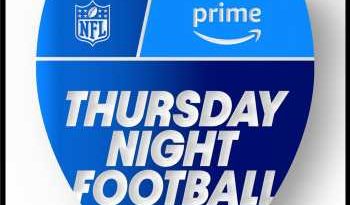Netflix Reveals Ad-Supported Tier Launch Date And Pricing, Which Undercuts Disney
Netflix is undercutting Disney+ on price by a dollar a month as it prepares for a landmark expansion into advertising-supported streaming.
The company said its new subscription tier, Basic with Ads, will cost $6.99 a month and will launch November 3 in the U.S., more than a month before Disney’s December 8 rollout of the ad-supported version of Disney+. Canada and Mexico will get the new plan November 1 and two days later it will go live in the U.S., Australia, Brazil, France, Germany, Italy, Japan, Korea, and the UK, with Spain following on November 10. In the U.S., the entry-level price will be less than half the cost of the most popular tier, Standard, which is $15.49 a month.
Related Story
'Roald Dahl's Matilda The Musical' Trailer: An Extraordinary Girl Takes A Stand
Disney has announced both price hikes and a new ad-supported version of Disney+. When that new tier launches on December 8, it will be $7.99 a month, which is currently the stand-alone price for the ad-free Disney+. After December 8, the ad-free Disney+ will go to $10.99, though many consumers opt for the bundle of Disney+, Hulu and ESPN+, which offers savings on the regular price of each one.
In a blog post, Netflix COO Greg Peters said there will be four to five minutes of ads per hour, with both series and feature films being interrupted by spots. (Watch a video below showing how it will look.)
Jeremi Gorman, head of worldwide advertising for Netflix, said inventory is nearly sold-out, with several hundred advertisers in the mix. Asked during a Zoom call with members of the press about how much advertisers paid, she declined to offer specifics. As to categories, political will be a notable no-fly zone given how meaningfully they have surged in linear TV in recent election cycles, along with others like guns, smoking or plugs for any products and services Netflix deems illegitimate.
Asked on the Zoom call to expand on the plan for ads during movies, Peters clarified that new movies coming to the service — notably marquee originals like Knives Out 2 — “will just have a pre-roll” of spots before the feature plays without interruption. “We’ll try to preserve that sort of cinematic model there,” consistent how most rivals handle it. By contrast, movies that have “been on the service for a while,” Peters said, will have a more “traditional” combination of pre-roll and mid-roll ads, albeit with “less frequent” breaks.
The degree to which the company has reversed its long-held position on advertising is difficult to overstate. Co-founder and Co-CEO Reed Hastings and other executives spent years denying that Netflix would ever work with Madison Avenue, with Hastings citing his wish to avoid entanglements over privacy and other complications that have hampered Facebook and other digital giants. ““We want to be the safe respite where you can explore, you can get stimulated, have fun and enjoy – and have none of the controversy around exploiting users with advertising,” Hastings said on a 2020 earnings call.
That was during comparatively halcyon days, however. In 2020, as Covid shut down the world, Netflix experienced a massive surge of subscriptions, adding 26 million paying customers in the first half of the year alone — equivalent to the total for all of 2019.
This year, the impact of inflation and a worsening economy on consumers as well as intensifying competition in a subscription streaming race Netflix once ran virtually by itself, have combined to create new headwinds. When Netflix posted two straight quarters of disappointing subscriber numbers — and even lost total subscribers for the first time in more than a decade — that misfire triggered a dramatic selloff in Netflix stock and prompted a range of changes at the company. In addition to cutting costs and streamlining its staff, the company decided to change its stance on ads, sensing the potential to add billions in revenue. A partnership with Microsoft was announced and two prominent Snap execs, including former Hulu ad sales chief Peter Naylor, were recruited to lead Netflix’s brand foray.
Not all programming will carry ads at launch. The blog post noted that “a limited number of movies and TV shows won’t be available” on Basic with Ads “due to licensing restrictions, which we’re working on.” During the press call, Peters said the missing titles represent about 5% to 10% of the overall pie. “It’s all based on deals, not a specific studio,” he said. “And again, we’ll work to reduce that number over time.” Most previous agreements with content suppliers were forged “in a timeframe before when we were not contemplating doing an advertising-based tier.” As Peters noted at the top of the call, just six months have passed since Hastings stunned Wall Street and the media business by seemingly tossing off a mention of the ad plan during a quarterly earnings call and the go-to-market plan being finalized.
The blog post also noted that Netflix has teamed with DoubleVerify and Integral Ad Science “to verify the viewability and traffic validity of our ads” beginning in the first quarter of 2023. Also next year, Nielsen will use its Digital Ad Ratings in the U.S., enabling the measurement firm to offer a sense of how viewership is going, reporting figures eventually via its long-in-the-works Nielsen ONE offering.
Downloads will not be allowed in Basic with Ads and the resolution is 720p, not as sharp as the 1080p of Netflix’s Standard plan, its most popular.
Take a look at the experience of advertising on Netflix, with this example the company gave of how a spot will look before an episode of Emily in Paris:
Must Read Stories
Netflix Seeks Anti-Heroes; Italy’s Film Exports Double; ‘Gomorrah’ Writers Return; More
Kevin Spacey Trial In Peril As Defense Lawyer Tests Positive For Covid, But Proceedings Continue
Amazon’s Head Of Originals, Asia Pacific, Talks Expansion & Competition
Fifth Season Promotes TV Chiefs Joe Hipps, Todd Sharp & Prentiss Fraser
Read More About:
Source: Read Full Article






